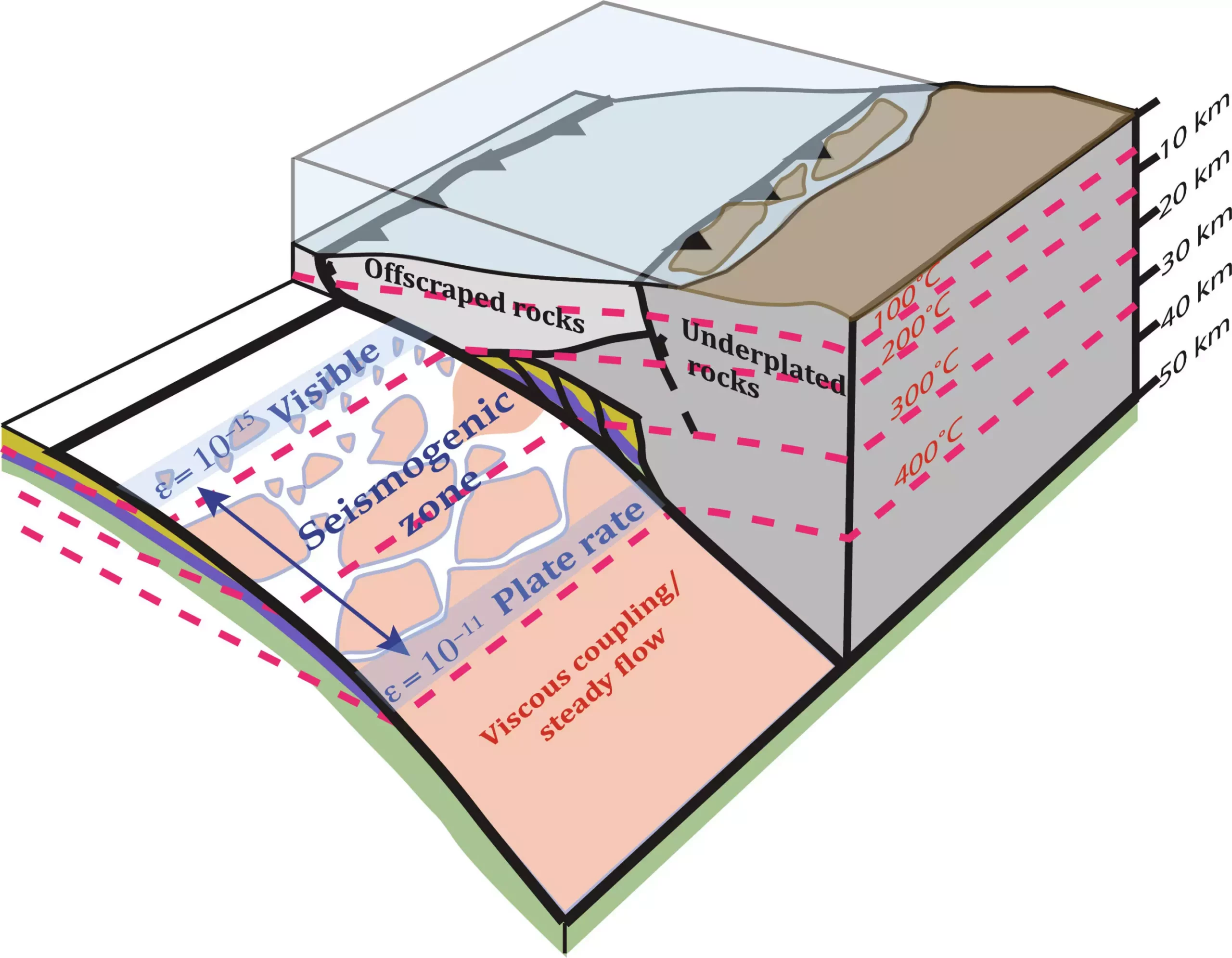Subduction zones, where tectonic plates collide, have long fascinated scientists due to their association with powerful earthquakes. However, predicting the behavior of these zones between major seismic events has proven to be challenging. A recent study conducted by researchers from Penn State and Brown University suggests that rocks once buried deep in ancient subduction zones could hold the key to better predictions. By examining rock formations in Alaska and Japan, the scientists were able to develop a new model to understand the pressure solution activity in subduction zones.
Sedimentary rocks comprise grains surrounded by water-containing pores. Under significant pressure, such as in subduction zones, the grains dissolve at their boundaries into the water present in the pores, creating pressure solution. This process allows the rocks to deform, influencing the movement of tectonic plates. To illustrate this phenomenon, lead author Donald Fisher compares it to ice skating, where the blade melts the ice and enables smooth gliding. Similarly, quartz grains in rocks dissolve at stressed contacts and precipitate in cracks, facilitating plate movement.
Subduction zones are where the most powerful earthquakes occur, as one tectonic plate slides beneath another. When stress builds up between these plates, akin to stretching a rubber band, an earthquake eventually takes place once the friction is overcome. The research team’s findings suggest that pressure solution is a crucial process during the interseismic period, or the time between earthquakes, in subduction zones. The occurrence of pressure solution significantly impacts the accumulation of elastic strain in different parts of the seismogenic zone.
Studying pressure solution in a laboratory setting is challenging due to its slow occurrence over thousands to millions of years. Accelerating the process in the lab requires higher temperatures, which introduce confounding factors. To overcome these limitations, the scientists turned to rocks that experienced tectonic pressures in the past and were subsequently brought to the surface. These rocks exhibit shear textures, indicative of strain, that provide valuable evidence for pressure solution.
Building upon a previous study linking stress and strain rate, Fisher and his colleague, Greg Hirth from Brown University, developed a more comprehensive model. This model takes into account factors like grain size and solubility – how much of the rock material can dissolve into liquid. The researchers were able to parameterize solubility as a function of temperature and pressure, allowing them to input different variables and obtain strain rates. This detailed model provides crucial insights into the depth range where strain is occurring in the seismogenic layer.
To test the efficacy of their model, the researchers applied it to the Cascadia Subduction Zone, an active fault system stretching from northern California to Canada. This region is well-studied in terms of temperature along the plate boundary and the accumulation of strain. The results of the model aligned with crustal movements observed through satellite measurements, indicating its reliability. Cascadia serves as an excellent example due to its extended interseismic period, with over 300 years since the last major earthquake.
The findings of this study have significant implications for understanding subduction zones and predicting their behavior. By incorporating pressure solution processes into predictive models, scientists can gain valuable insights into the buildup of strain and potential earthquake events. The ability to delineate where strain is occurring within the seismogenic layer aids in assessing seismic hazards in regions prone to subduction zone earthquakes.
Ongoing research in this field aims to further refine the model and expand its application to other subduction zones worldwide. Through interdisciplinary collaboration and the integration of geological and geophysical data, scientists hope to improve our understanding of these dynamic zones and enhance our ability to anticipate seismic events. Ultimately, this knowledge can contribute to the development of effective strategies for mitigating the impacts of future subduction zone earthquakes.


Leave a Reply